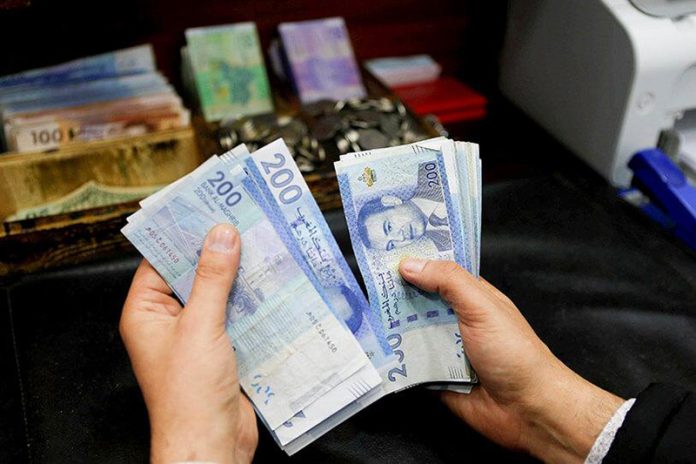At the heart of Bank Al-Maghrib’s mission lies one clear priority: safeguarding monetary stability. This core objective is embedded in the central bank’s mandate, guiding every tool and decision it employs. While growth and broader economic dynamics are important, the bank’s role is to act as a vigilant regulator—supporting the national economy without ever straying from its long-term strategy.
Maintaining price stability doesn’t mean aiming for zero inflation. Instead, the goal is to keep inflation moderate and predictable over time, helping to preserve purchasing power, build investor confidence, and give businesses a clearer horizon. In doing so, monetary policy becomes an indirect—but vital—driver of growth, job creation, and economic development.
To track inflation, Bank Al-Maghrib relies on data from the High Commission for Planning, which produces the national Consumer Price Index. This index is based on a fixed basket of 478 goods and services, tracked across 17 cities and encompassing more than a thousand product variants—offering a detailed and accurate reflection of household spending patterns across Morocco.
Monetary policy decisions follow a strict and structured process. It begins with a deep analytical review of national and global economic indicators. The bank’s teams assess the latest trends since the last policy meeting, forming the basis for macroeconomic forecasts. This analysis feeds into a draft version of the Monetary Policy Report, which is reviewed internally and discussed in a preparatory meeting of the Monetary and Financial Committee (CMF). After incorporating feedback, the finalized report is submitted to the Bank Al-Maghrib Council for deliberation and decision-making.
Once decisions are made, it’s up to the bank’s operational teams to implement them. Their job is to manage liquidity in the interbank market, using refinancing or liquidity-absorption operations to keep the average interbank rate aligned with the central policy rate. This operational target is the first link in the transmission chain, eventually influencing lending rates and credit access in the real economy.
The bank’s strategy is built on a dual analytical framework. The first pillar focuses on real-sector data—growth, employment, global commodity prices (such as oil, wheat, and phosphates)—which affect inflation, foreign reserves, and the current account. This analysis also examines internal pressures using indicators like the output gap and production capacity utilization.
The second pillar tracks monetary and financial variables: banking system liquidity, interest rates, credit trends, and money supply. It also monitors broader financial markets, including real estate, equity markets, and public debt, in order to assess wealth effects and their impact on demand and inflation. Together, these pillars allow the bank to identify risks to price stability and steer its policy with precision.
Since 2015, Bank Al-Maghrib has used a semi-structural core forecasting model that blends economic theory with empirical realism. It’s made up of four interconnected modules: a growth block analyzing demand components; an inflation block distinguishing between core inflation, regulated prices, fuel, and volatile food items; an external sector block that incorporates global demand, inflation, exchange rates, and commodity prices; and a monetary policy block, which can adapt to different exchange rate regimes if needed.
Surrounding this core model are several satellite models used for short-term forecasting and for analyzing areas not fully covered by the main framework—such as public finances, the balance of payments, or certain aspects of monetary conditions. These tools also allow the bank to simulate alternative scenarios, like the impact of a European economic slowdown, shifts in ECB policy, or poor cereal harvests.
The bank communicates its forecasts using fan charts, which visually represent the uncertainty around its baseline projections. This work is grounded in a rich dataset drawn from internal and external sources, supported by business surveys covering industry trends, credit conditions, and inflation expectations.
To manage liquidity and influence monetary conditions, Bank Al-Maghrib has a wide array of instruments at its disposal. Its primary weekly operations inject or withdraw liquidity through competitive bidding. When unexpected tensions arise, short-term operations can be deployed. Banks also have access to overnight facilities—either advances or deposits—to meet day-to-day needs. For longer-term imbalances, tools like repo agreements and currency swaps come into play.
If liquidity imbalances persist, the bank can launch structural operations, including buying or selling Treasury bonds on the secondary market or issuing its own negotiable securities.
Recognizing the financing challenges faced by very small, small, and medium-sized enterprises (TPMEs), Bank Al-Maghrib has adapted its approach. As early as 2012, it expanded the eligibility of collateral to include private-sector claims on TPMEs. In 2013, it launched a broader support program, offering banks advances tied to the amount of credit they extend to these businesses—excluding real estate and liberal professions. Additional refinancing incentives were later introduced for industrial and export-oriented TPMEs.
During the COVID-19 crisis, the bank intensified this support by including working capital loans in its refinancing program and shifting from quarterly to monthly operations to better match the evolving needs of the productive economy.
